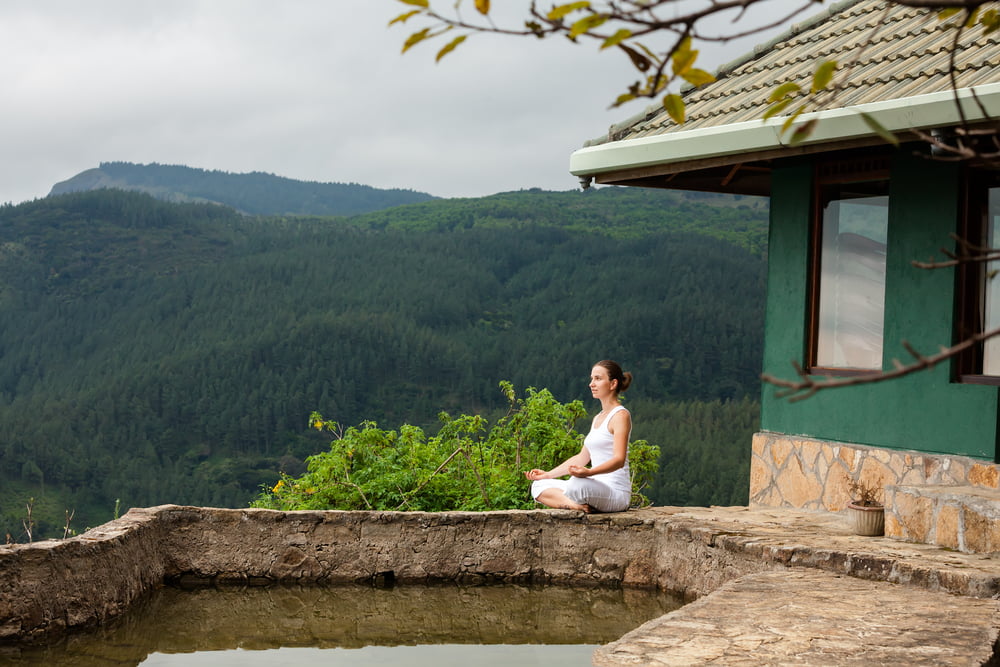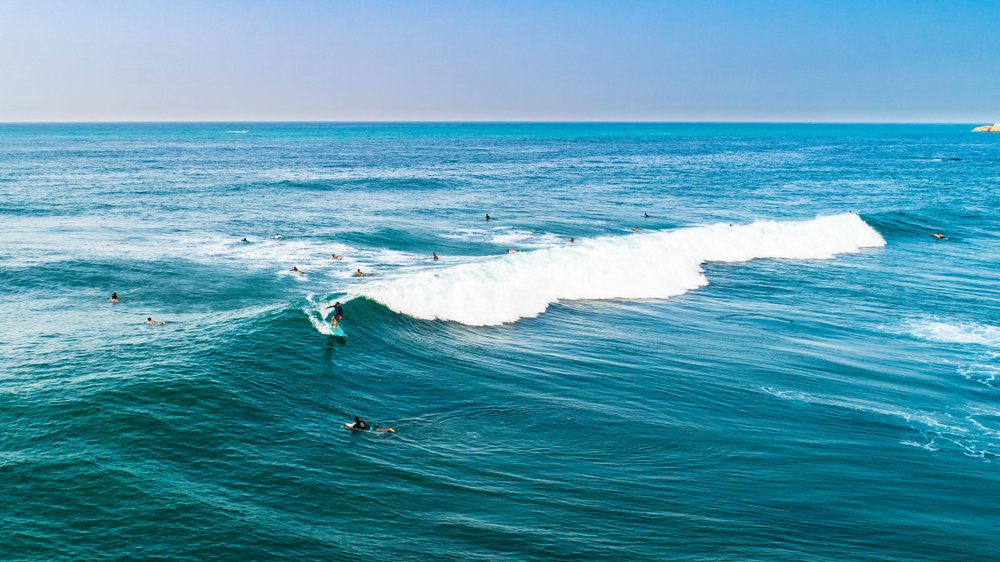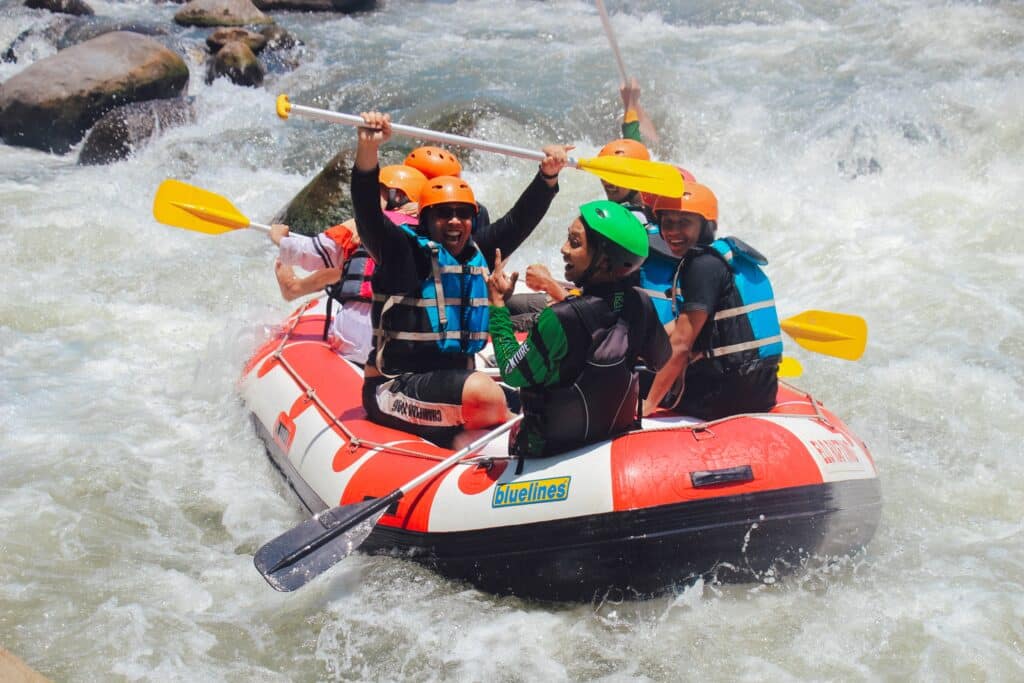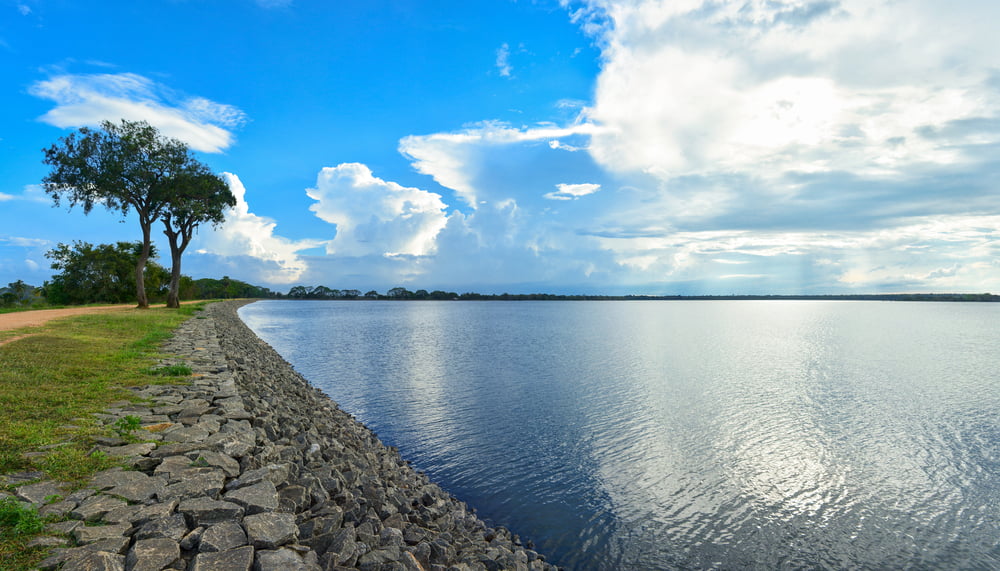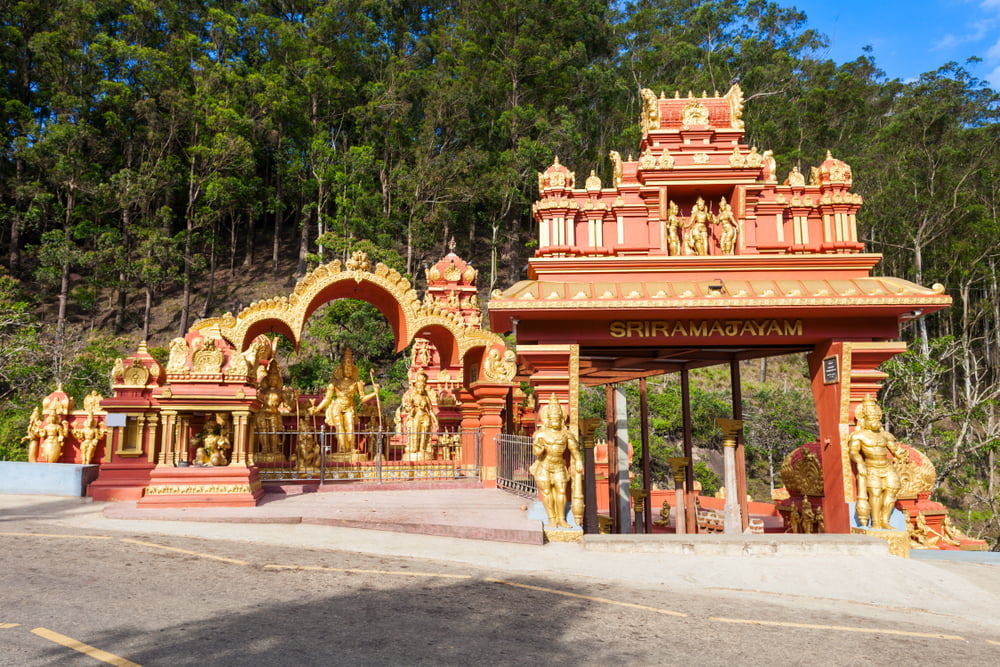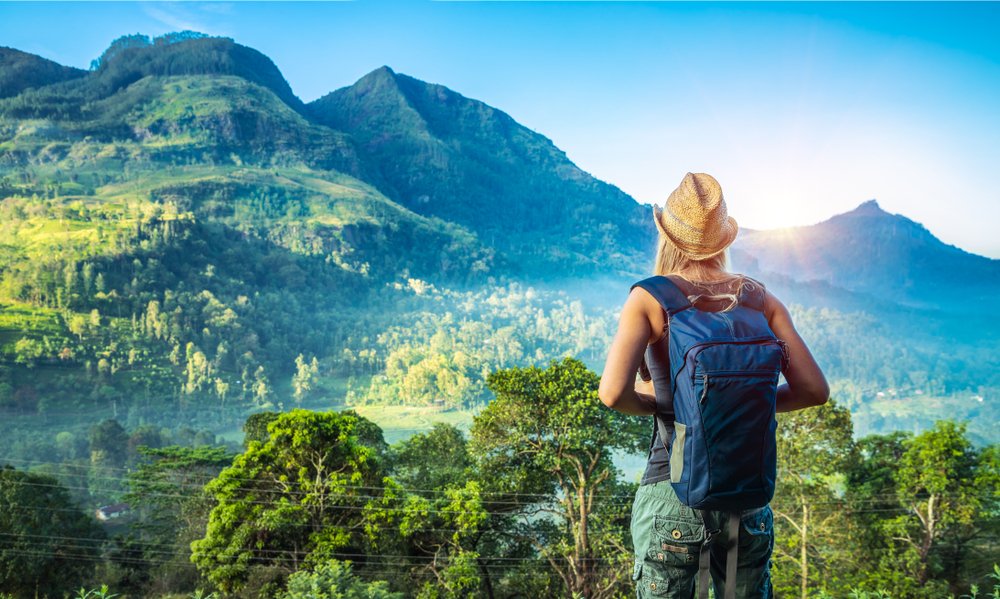
WHY YOU SHOULD KEEP TRAVELLING TO SRI LANKA!
All in all, these ‘difficulties’ such as power cuts, occasional fuel shortages or protests have always been common in Sri Lanka. So we must learn to live with it and adjust to the situation, locals and tourists alike.
The Island is dependent on tourism for its foreign income! If there is no fuel, you can’t travel around, and the country won’t make money to buy more fuel. So the government will do everything possible to ensure this doesn’t happen.
So if I can give anyone who has doubts about their plans and travels any advice, please come to Sri Lanka. Now, more than ever, our Island needs tourists. The 2019 Easter Sunday attacks and the 2020/2021 global pandemic are the two previous disasters we don’t have (much) influence on.
Sri Lanka is now in a financial crisis due to a foreign currency issue, and a solution to this problem is YOU!
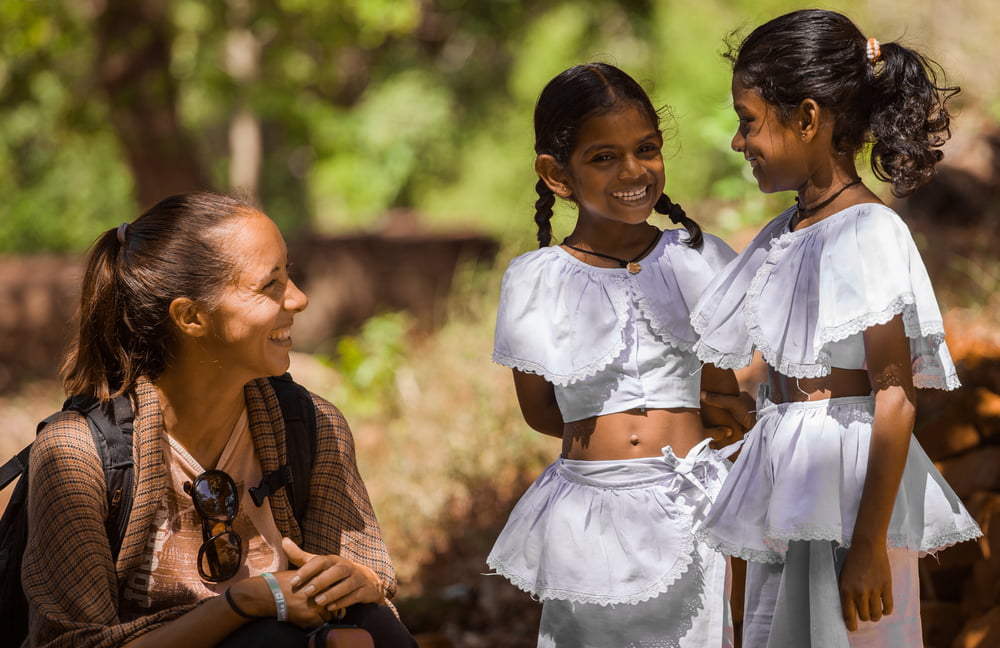
THE FRIENDLY SRI LANKAN PEOPLE
As Sri Lanka is a country dependent on tourism, many people are willing to help! However, our customers have been experiencing that people in queues insist they go; first, police have let them pass petrol queues, fuel station managers that ask them to come forward, and the list goes on!
But even hotel owners that have extra fuel stored at their places or send someone to get fuel for you, indeed the hospitality of the people towards tourists in this crisis has been excellent.
I think everyone understands that tourists bring foreign currency to the country, so it’s best they have no hinder to the current economic situation on the Island.
WHERE TO GO IN SRI LANKA
It’s easy to step off the plane in Sri Lanka’s modern capital Colombo and head straight to a beach, coconut drink in hand – and why wouldn’t you? Beaches to lounge on include the west coast’s Unawatuna or further south at Mirissa and Tangalle. News on the ground is that things are tranquil in the north and east! No objections; everyone is going about their lives. But, with an added advantage, that part of the Island is in season! Beautiful beaches around Trincomalee, great surf around Arugam Bay.
Sri Lanka has its fair share of stunning UNESCO World Heritage Sites. Some of the most prominent ones include Sigiriya, an ancient fortress built atop a massive granite monolith, Anuradhapura and Polonnaruwa was, Sri Lanka’s medieval capitals, the Sacred City of Kandy, with the highly revered Temple of the Tooth, the Golden Temple of Dambulla; and the Old Town of Galle.
In the centre of Sri Lanka, the Cultural Triangle includes the city ruins of Anuradhapura, where you could easily get lost for weeks and not find the 2000-year-old bodhi tree; Polonnaruwa, the country’s medieval capital with ancient dagobas (stupas) and giant Buddha statues; and the rock citadel of Sigiriya that rises dramatically out of the landscape – you can scale the steep stairs beginning at two colossal stone lion paws! There’s also a fantastic cave monastery nearby in the small town of Dambulla.
To the south is Tea Country and amidst the mountains and tea estates is the little village of Ella, where you can hike up Ella Rock or Little Adam’s Peak for spectacular views. Big brother, Adam’s Peak, is west of Nuwara Eliya, where monks and tourists take a pilgrimage to see Buddha’s Sacred Footprint at the summit.
If it’s nature you want, you’ve come to the right place. The country has a great network of national parks and reserves. Some of the best include Minneriya national park for elephants and Yala, where you can catch a glimpse of secretive leopards. From May to July, during Palu berry season, you might see a sloth bear at Wilpattu National Park, and at the ocean off the city of Galle, you’re in the right place to see a magnificent blue whale!
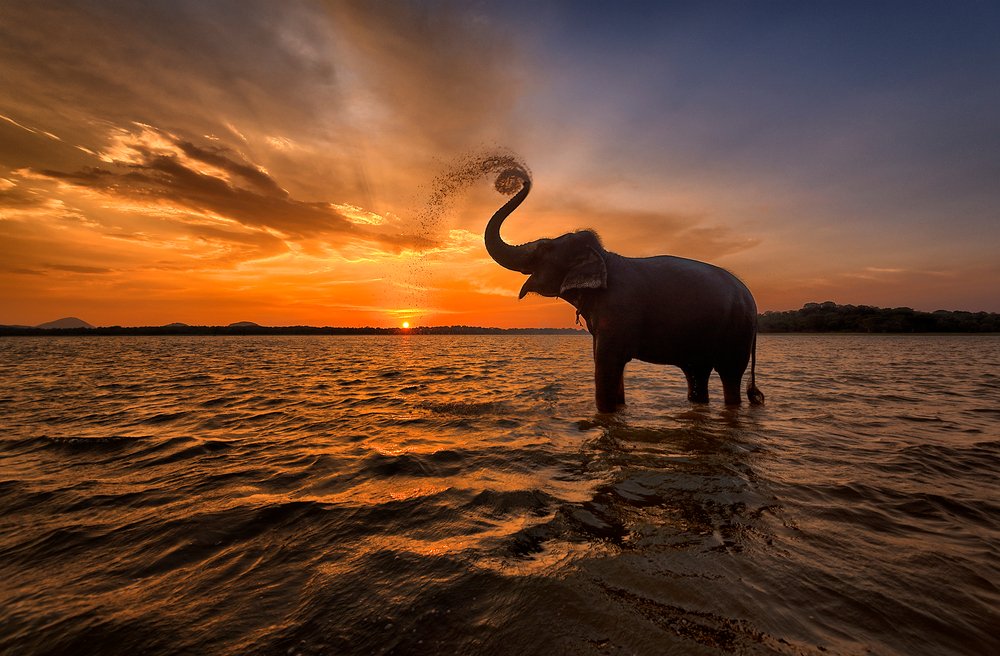
WHETHER IN SRI LANKA
Sri Lanka’s tropical climate brings temperatures around 27°C – 30°C to most regions of the Island. The Hill Country in the central province is the coolest and the mildest place, where Nuwara Eliya tops the list with a mean average of 16°C. Other upland areas also experience a temperate climate between 16°C to 20°C. Down South, North & East, Ancient Cities and Western are warmer with average temperatures around 27ºC. The March-June season experiences slightly higher temperatures of up to 33ºC, while the temperatures in November-January are a few degrees lower at around 24ºC at the coast. Jaffna, in the most northern part of the country, records a temperature of 28°C – 32°C.
WELLNESS TOURISM SRI LANKA
The traditional Ayurveda healing methods and exercises vary from Ayurvedic steam baths and saunas to meditation, acupuncture, energy medicine and yoga. Based on herbs and diet, it was the region’s only treatment method until the introduction of western medication.
“Ayurveda”, which derives from ancient Sanskrit, means “the science of life”, which has a holistic approach to the ways the body and mind can be treated. Ayurveda consists of three vital forces – Vata (wind), Pitta (fire) and Kapha (earth). Ayurveda is known for its fantastic healing methods for certain illnesses, surpassing western medication practices; Ayurveda treatment methods have captured the world of the west, and most tourists have recognized Sri Lanka as their destination of choice for medication. Specialized educators and trained staff are based in every luxury resort to looking into the visitor’s needs, from Ayurveda body massages to Ayurveda steam baths and herbal baths. Some of these Ayurveda resorts possess” behemoth our”, which dates back to the ancient times, immersing the individual in a boat filled with herbs and medicinal drugs plants to rejuvenate, refresh, and heal the body.
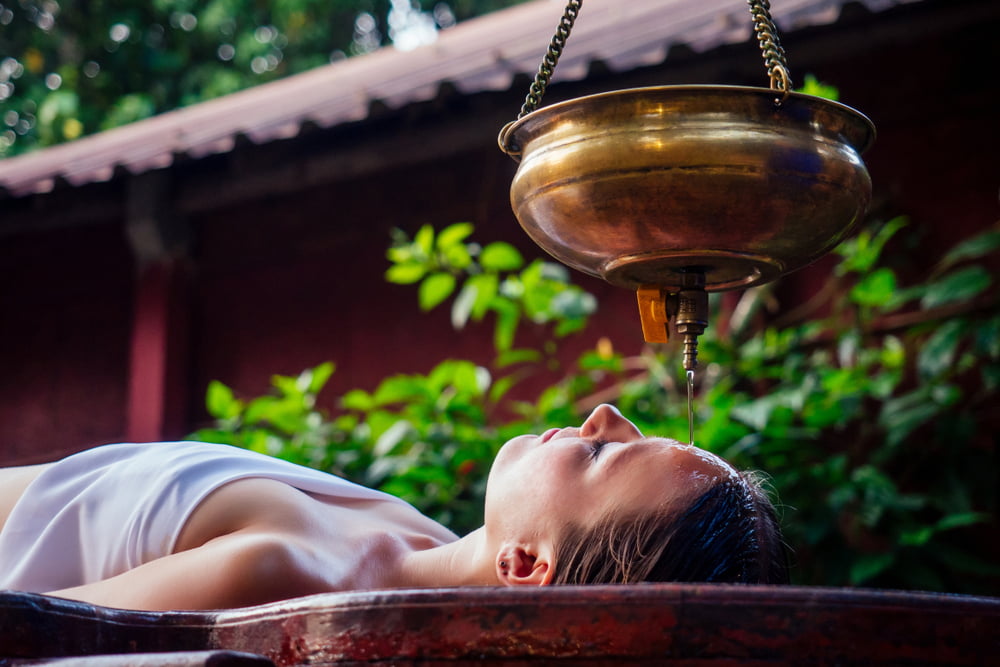
Travellers to wellness establishments in Sri Lanka are focused on treatment for weight loss, stress relief, and detoxing to get away from their busy and stressful lifestyles in their countries. In addition, most tourists like to experience the powers of meditation and yoga to maintain perfect mental health and a healthy lifestyle. To promote these elements of wellness tourism, luxury spas, Ayurveda products, herbal treatments, and meditation centres are available in star-class hotels, boutique hotels and luxury villas across the Island.
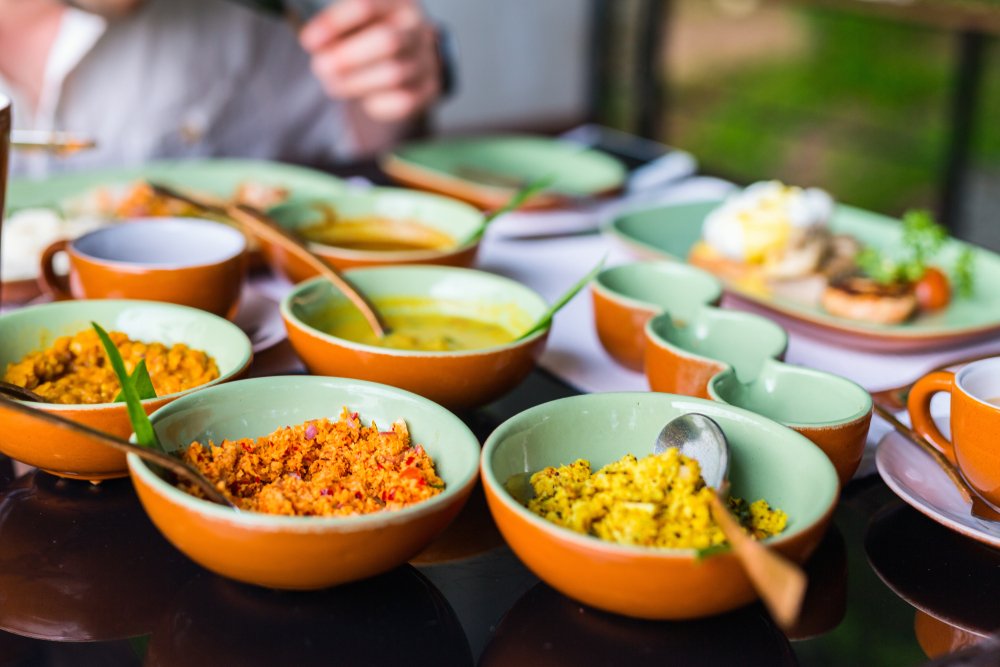
FOOD AND BEVERAGES IN SRI LANKA
Sri Lanka’s incredible cuisine stems from liberal use of locally-grown tropical vegetables and fruits, access to fresh seafood and a coveted arsenal of spices. Many dishes can be traced back to colonization when external elements greatly influenced traditional foods. But even those dishes with foreign roots are prepared with a Sri Lankan twist to suit local tastes and have become exclusive dishes of the Sri Lankans.
Culinary experience allows you to study and learn the secrets of Sri Lankan cuisine from famous hotel chefs and locals. Learn how to appreciate the subtlety of different spices used in local cooking and refine your ability to wrangle Sri Lankan cuisine’s fiery punch with balanced flavour profiles. Also, it explores some famous colonial dishes that mix both local flavour and colonial cooking methods to make rich dishes that tell the complex history of the Island.
The word Ceylon had become interchangeable with the world’s finest tea in over one hundred and fifty years. In the world’s eyesight and tongue, Ceylon stood for tea, and tea was Ceylon(Sri Lanka).
Rolls Royce is to automobiles; Rolex is to watches; Havana is to cigars and Scotland is to whisky; Ceylon is to tea. Hill Country of Sri Lanka is leading For Tea manufacturing, and some places in Down South are also best for tea manufacturing with different tastes.
ACTIVITIES TO EXPLORE IN SRI LANKA
Sri Lanka has a tropical climate, and November to March is the driest and sunniest time of year. The country’s southwest has been the most popular destination for travelling surfers, being cheap, safe and having access to quality waves.
April to October is the time of year that brings the most consistent swells, but onshores can be a problem during this time. Morning is the time to go out with the best chance of offshore conditions. During the surf season, you can expect swells from 3-8ft, and for the rest of the year, the surf is in the smaller 2-6ft range—listed best surfing Spots in Sri Lanka.
Sri Lanka has plenty of scuba diving and snorkelling spots. If you’ve never done any diving, there are PADI diving schools that can help you master the art of scuba diving. For more experienced divers, equipment is available for rent at all the diving schools. Check out the best diving and snorkelling spots in Sri Lanka from coral reefs and shipwrecks.
The jungle adventure can be a magical experience. Unforgettable memories come instantly to mind. Spend your evening indulging in a succulent BBQ in front of a Campfire and let the gush of river water lull you to sleep under the starry skies in a cosy tent. Then, wake up to the sun rays kissing you through the thick mountain mists and sip your steaming cup of tea on a hammock.
Even for the most die-hard kiteboarders, taking a trip to Sri Lanka is as much about appreciating the beautiful surroundings and vibrant culture as it is about making the most of the excellent kitesurfing conditions.
Northwest Sri Lanka, in particular, holds a special place in the hearts of the travelling kitesurf tribe, thanks to its strong wind and legendary flat water lagoons. Indeed, Kalpitiya is the central hub of kiteboarding in Sri Lanka, but in reality, there are many more places to fly your kite in this beautiful, intriguing island nation.
Sri Lanka is a remarkable country for birds. Although small, it has a wide range of climate and habitat and over 435 species of birds. Of these,235 are residents, including the most essential 33 bird species recognized as endemic to the country. A further 198 species have been recorded as migrants to the country. Sri Lanka has 26 National Parks, and most national parks are suitable for Bird watching. Also, Sinharaja Forest Reserve and Kitulgala are the best bird-watching spots in Sri Lanka.
Water Rafting in Sri Lanka is one of the emerging sports among the Sri Lanka Holiday, Travellers. Occasionally your experience will not be limited to “thrilling”. It is a holistic experience about leadership, challenging and strategic thinking.
This thrilling adventure on the white water sections of the Kelani River is suitable for amateurs and professionals.
For the keen trekker /hiker, many opportunities await in Sri Lanka. Following are some of the scenic trekking trails in Sri Lanka crafted by our expert trekking guides, who are very experienced and knowledgeable in their areas. Locations for Hiking & Trekking In Sri Lanka Ella, Singaraja, Kithulgala, Belihuloya, Nuwara Eliya And Sigiriya.
You can take a breezy boat ride on the scenic and famous places like the Madu River, Gal Oya Nilwala River and many more, which will not only take your breath away but revitalize your senses and strengthen your soul.
Cycling in Sri Lanka will leave you mesmerized! Meander through the rocks and cave temples of Sigiriya, the cultural landscape of Kandy, the perfect greenery of Hatton, and the splash of beaches that is Srilanka! A wonderful mix of beaches, plantations, wildlife, and lakes creates an exciting mélange of the scenic fabric of Sri Lanka.
Motorbike tours in Sri Lanka take you through pristine landscapes under the sun while ending in a fabulous hotel each night. This luxury adventure is a recipe for optimum discovery, ensuring you savour the Island’s most attractive features. The cultural triangle, tea plantations, and the southern beaches come complete with the smiles of the Sri Lankans you meet along the way. Unforgettable memories in style are ahead as the trip is perfect for nature-loving couples seeking an exclusive experience.
UNIQUE EXPERIENCES IN SRI LANKA
The train routes in Sri Lanka are some of the most beautiful in the world. Travellers dream of taking the train to the hill country, through old pine forests and foggy tea estates. Don’t miss these unforgettable rail journeys that will leave you breathless and wanting more. Find out which are the best routes and where to catch the trains.
Indigenous (Vadda) people are the last indigenous tribe on the Island of Sri Lanka. Dating back to the 6th century BC, the Veddas inhabited the forests of Sri Lanka long before the Buddhists arrived. The Vedda’ Forest People’ are unfortunately slowly becoming extinct. Still, some reservations can be visited where Veddas show tourists their way of life in Mahiyanganaya.
The irrigation works in ancient Sri Lanka, the earliest dating from about 300 BC, in the reign of King Pandukabhaya and under continuous development for the next thousand years, were some of the most complex irrigation systems of the ancient world. In addition to constructing underground canals, the Sinhalese were among the first to build completely artificial reservoirs to store water. The plan was extensively restored and further extended during the reign of King Parakramabahu (1153–1186 CE)
According to Sri Lankan history, the first tank was built by King Pandukabhaya, who reigned from 437 to 367 BC. He had three tanks built, namely Abhaya weva, Gamini weva, and Jaya weva, yet, presently, only one tank named Basawakkulama weva can be identified. After King Pandukabhaya, King Parakramabahu had built many tanks, including Parakrama samudraya, still providing water for agriculture. It can be said that many rulers of Sri Lanka contributed to the development and construction of tanks all over North Central Sri Lanka. (Over 10000 tanks )
Sri Lanka is a country with an agro-based economy where agriculture and farming have been given pride of place since the times of ancient Kings. The government is scattered with gigantic reservoirs and significant irrigation schemes that have been used for agricultural purposes through the centuries.
You can get great insight into the agricultural practices, some traditional and others were more modern. For example, you can watch paddy cultivated or harvested by chanting classic harvest songs and visit the plant and seed nurseries, commercial vegetable farms, orchards, dairies and tea plantations.
Village Tour Sri Lanka allows you to experience traditional Sri Lanka with all its authenticity. Spend time with the villagers and understand village life. Engage in many village activities that form everyday life, such as an oxen cart ride, a catamaran ride and a field walk. Learn to cook traditional Sri Lankan food. You will finish with an exceptionally delicious buffet lunch, served in classic Sri Lankan style.
Sri Lanka has more than 50 Ramayana sites, from the place of Seetha Devi’s captivity to the battlefields of war where Lord Rama slew Ravana, the ten-headed demon-king.
In Sri Lanka, People still remember the connection of Lanka to the great epic. An oath was taken at the spot where Seetha Devi undertook ‘Agni Pariksha’ is still considered valid in village courts or grama sabhas. It is said the colour of the soil of the ancient battlefield is still red today and surrounded by lighter-coloured ground. One of the airports of Ravana, burned by Hanuman when he came looking for Seetha Devi, still has a scorched-earth look.
A patch of darker soil covered by brown earth. Unfamiliar alpine Himalayan species are found suddenly amidst tropical Sri Lankan vegetation, the legacy of Hanuman’s heroic voyage carrying a mountain with life-restoring herbs. The names of places are still unchanged. And are still well connected with the epic.
Ceylon Gems are the highest quality natural gemstones from Sri Lanka, formerly known as Ceylon, and are home to these gems that possess breathtaking beauty. The rich culture and conditions all combine to produce magical gems unparalleled to any other form of jewellery. The characteristics of a high-grade gemstone guarantee it has a bold color, clarity, rarity and durability.
Ceylon Sapphire is strong and sturdy. Blended with its lustrous beauty, it’s ensured the jewellery it’s converted into is eye-catching and will last a lifetime. Ceylon Sapphire rates a nine on the Mohs Scale of Mineral Hardness. These stones have an allure and lust that is unique and elegant. They range in colours and have a mystic aura that captivates anyone that wears or comes into contact with these pieces. Ratnapura is the central city for the Gem mining industry.

